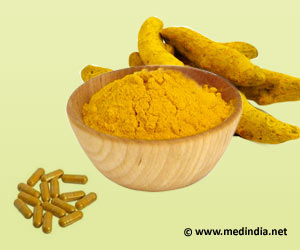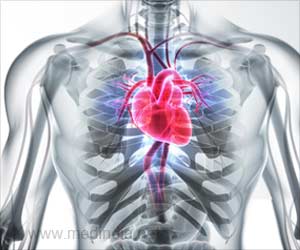According to the article on the study, which was supported by So Paulo Research Foundation – FAPESP, applications of 7.8-15.6 micrograms per milliliter (g/mL) of curcumin associated with blue LED irradiation (λ = 450 5 nm), with a light dose of 10 J/cm2, successfully inactivated immune system cells (macrophages) infected with Leishmania braziliensis, the most common species of the parasite in Brazil, as well as Leishmania major.
‘Substance extracted from turmeric was incubated in cells infected by Leishmania braziliensis and Leishmania major, and later irradiated with blue LEDs.’
Healthy cells were not harmed. When curcumin and light were administered separately, the results were not satisfactory.
Photodynamic therapy (PDT) is a chemical process resulting from the interaction of light, oxygen and a drug sensitive to light – a photosensitizer – that is administered in the form of an ointment or injected. After a certain interval, the tissue is irradiated with light at a specific wavelength depending on the drug. The light activates the drug, which reacts with the oxygen in the infected cells, resulting in their death.
“Curcumin showed a good distribution in the macrophages, as well as in the amastigotes [a form of the parasite] inside them, at the tested concentrations, after an hour of incubation.”
PDT with curcumin was able to reduce the viability of amastigotes within the macrophages, besides changing their mitochondrial activity, which resulted in a significant impact on the morphology of these cells, causing intense destruction,” the article concludes, adding that “an interesting point is the low recovery of parasites after the PDT treatment, which allowed us to infer that the use of PDT associated with curcumin, at the tested parameters, was effective in eliminating the parasites and reducing the parasitic load with a single application”.
Leishmania parasites invade human cells and are able to escape the host’s immune system. Their life cycle has two stages: the promastigote, which is flagellate, extracellular, and found in the sandfly that transmits the protozoan; and the amastigote, which is intracellular and immotile, and infects the human organism.
Juliana Ferreira-Strixino, principal investigator for the study and head of UNIVAP’s Photobiology Applied to Health Laboratory (FOTOBIOS), explained that one of the goals was to understand the functioning of the promastigote form, which has several kinds of protection against the host’s immune system, and also how the therapy acted against amastigotes.
“The in vitro trials produced a major reduction in parasite load, meaning destruction of infected macrophages and of the parasites in the amastigote form,” she said.
The authors of the article note that if “the therapy eliminated only the host macrophages, there would be a risk of releasing viable parasites to infect new cells. However, this study showed that alternate applications of PDT could completely eliminate the parasites from the local lesions.”
Before testing curcumin, the researchers analyzed other photosensitizers, such as chlorine, methylene blue and porphyrin. This test also resulted in the publication of an article.
The Optics and Photonics Research Center (CEPOF), a Research, Innovation and Dissemination Center (RIDC) supported by FAPESP and hosted by the University of So Paulo’s So Carlos Physics Institute (IFSC-USP), contributed to the project by supplying the photosensitizer.
“Curcumin proved to be efficient and cheaper. Its application could reduce the cost of the medications used against leishmaniasis,” Ferreira-Strixino said.
Turmeric is of course well-known for its golden color and use in Indian seasoning. Curcumin has anti-oxidant and anti-inflammatory properties.
The disease
Cutaneous leishmaniasis is the most common form of tegumental leishmaniasis, and is transmitted by the bite of infected female phlebotomine sandflies, which feed on blood to produce eggs. It causes disfiguring skin lesions that can leave life-long scars and lead to severe social stigma, especially for women and children.
leishmaniasis is listed by the World Health Organization (WHO) as a neglected tropical disease (NTD), and as a public health problem in Brazil, where the official number of new cases reached 15,484 in 2019. The detection rate was 7.37 cases per 100,000 inhabitants, according to the Ministry of Health. NTDs are viral, parasitic and bacterial diseases that mainly affect the world’s poorest people.
Prevention of leishmaniasis requires efforts to wipe out the sandflies that transmit it, as in the case of dengue, also a NTD and transmitted by the mosquito Aedes aegypti.
NTDs are thought to affect some 1.5 billion people in more than 150 countries, but investment in basic and clinical research is insufficient. As a result, many available therapies are repurposed from other diseases, with severe side-effects and too high a cost for poor patients.
In recent decades, epidemiological surveys of leishmaniasis have pointed to changes in transmission of the disease, initially considered a zoonosis exclusive to wild animals. It is now reported in rural areas that have been deforested and the outskirts of cities.
Next Steps
According to Ferreira-Strixino, her research group is now starting to prepare a study that will work with rodents, although the model has yet to be chosen (rats, mice or hamsters, for example).
Plans for the future include testing curcumin as a low-cost therapeutic alternative. It can be applied to skin lesions individually, avoiding the impact of systemically administered drugs.
Source: Eurekalert



